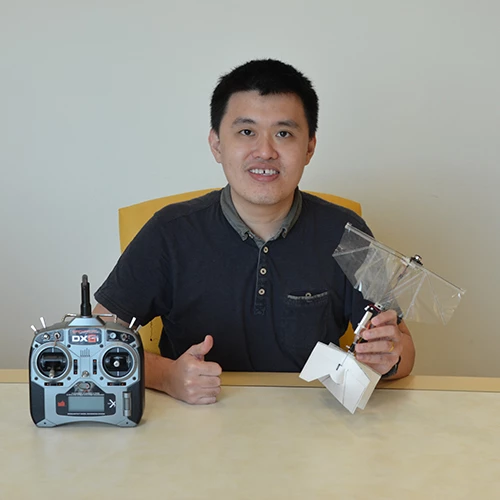Robotics researchers regularly turn to the natural world for inspiration, and those working on machines that fly are no different. An international team of scientists has taken this approach to produce a bird-inspired drone with flapping wings that can hover, dart, glide and dive, all while weighing the same as two tablespoons of flour.
The drone is only at the prototype stage, but the researchers imagine it being used in a variety of applications due to its versatility. This stems from its source of inspiration, the aerial maneuvers of swifts, one of the world’s fastest birds and one known for its incredible acrobatics.
The resulting aircraft is one known as an ornithopter, which means that it flies by flapping its wings. In this way it is similar to a number of other research projects we’ve looked at in the past, including one from Stanford University that uses flapping, folding wings to protect drones from impacts, such as those they might experience while flying through dense forests.
The aerospace engineers behind the new 26-gram (920-oz) ornithopter have also designed their aircraft to safely navigate busy environments. It can do a few things standard quadcopter drones cannot, according to the team, with the ability to glide, hover using very little power, and quickly come to a stop when traveling at fast speeds.
“There are existing ornithopters but, until now, they were too inefficient and slow to be agile,” says aerospace engineer at the University of South Australia, Professor Javaan Chahl. “We have overcome these issues with our flapping wing prototype, achieving the same thrust generated by a propeller. Flapping wings can lift like an aeroplane wing, while making thrust like a propeller and braking like a parachute. We have put this together to replicate the aggressive flight patterns of birds by simple tail control.”
In its current state, the wings of the ornithopter beat slowly, and this paired with its light weight make it safer than a standard quadcopter for use around humans, the team says.
This makes it suitable for surveillance applications, for example, but the team hopes to improve its design so that it can take on other tasks, too. This could mean loading it up with payloads to perform pollination at indoor vertical farms, chasing away birds at airports, or surveying forests and wildlife.
The research was published in the journal Science Robotics.
Source: University of South Australia




